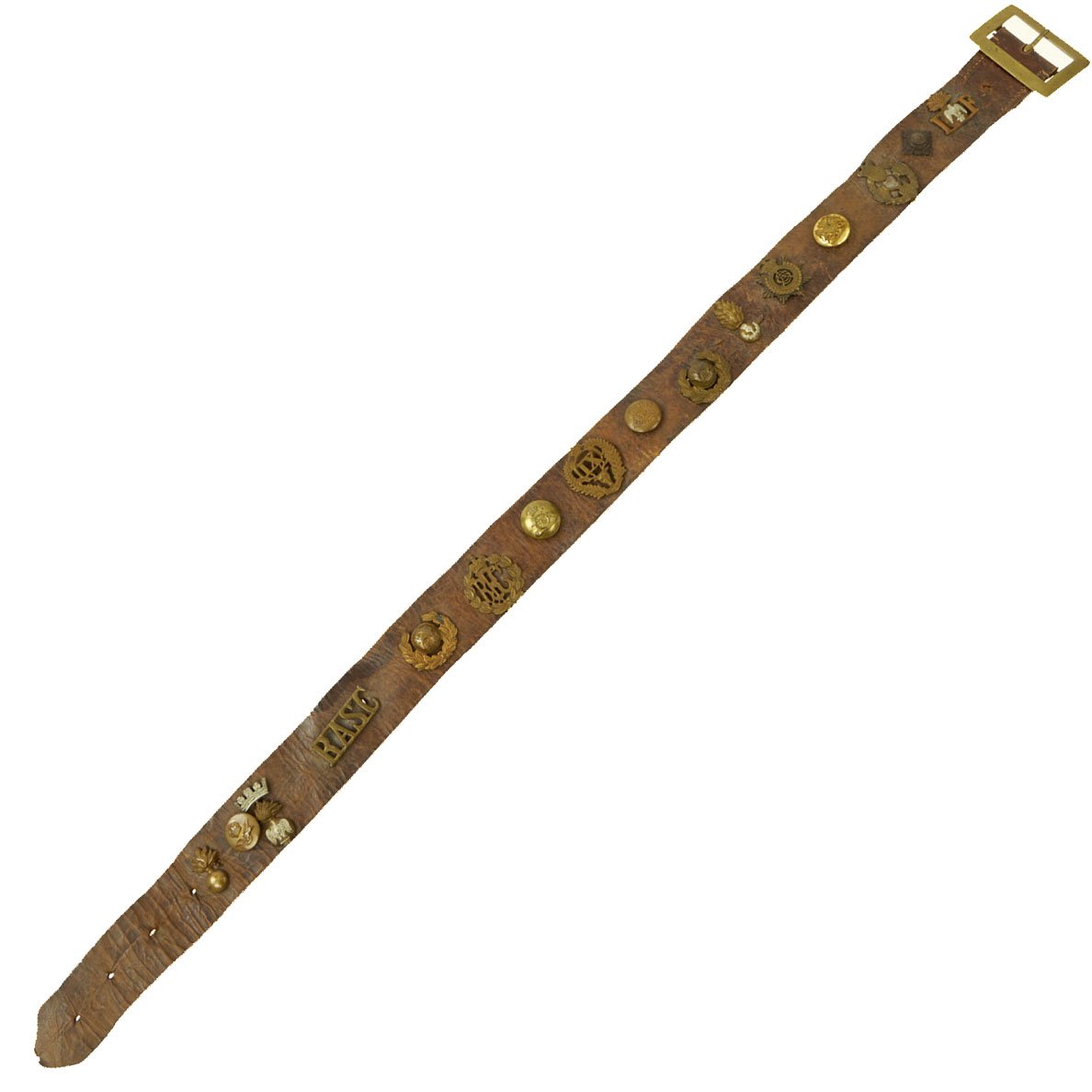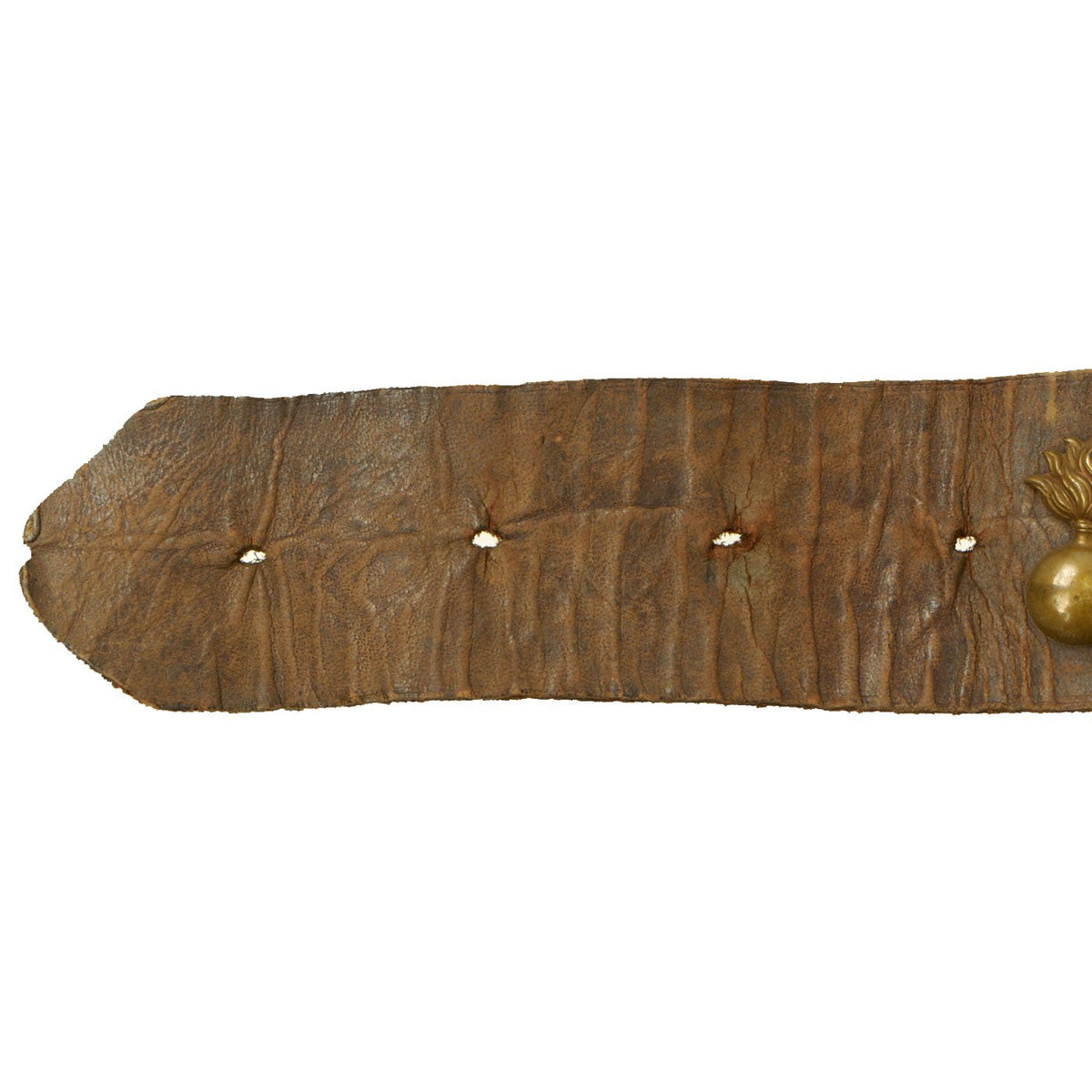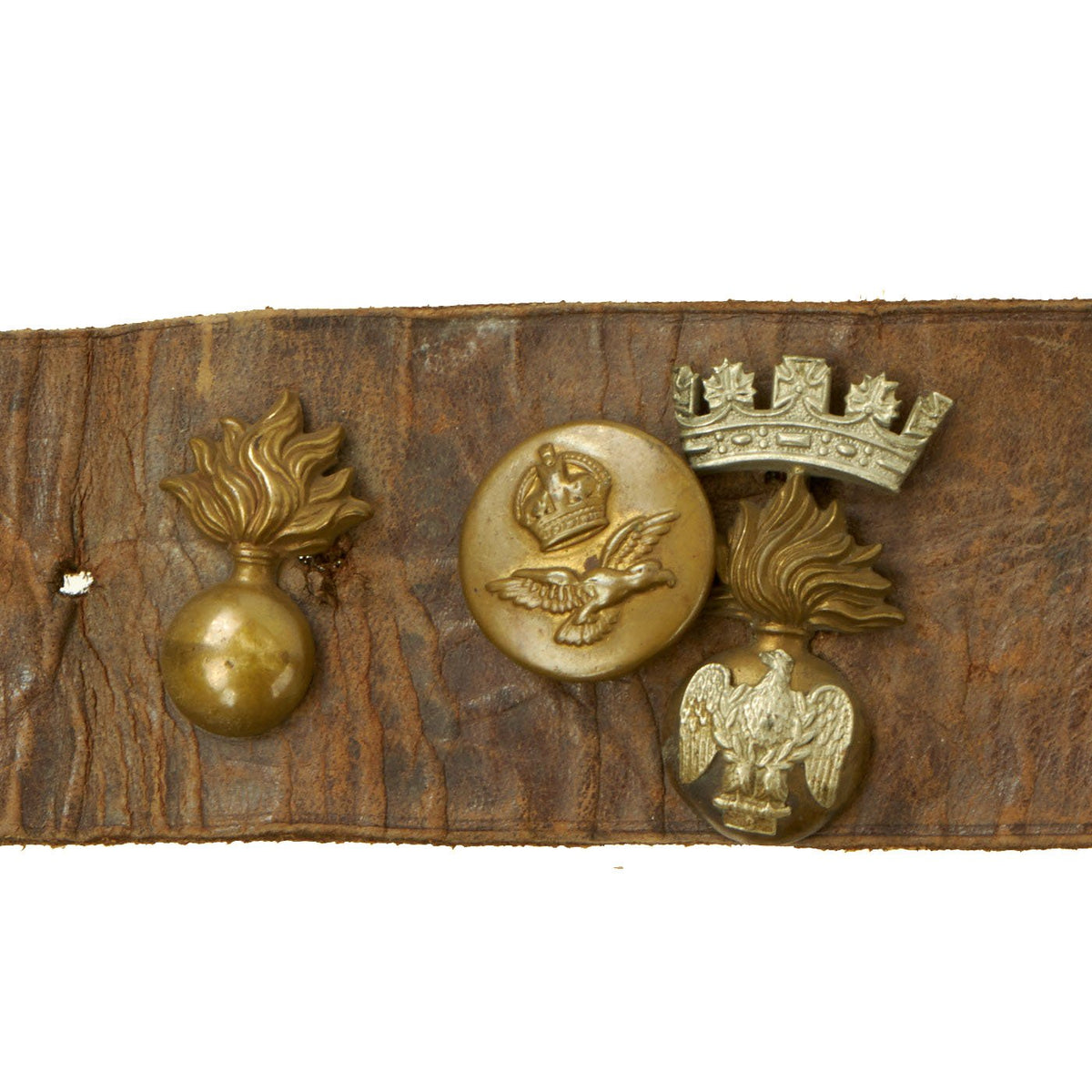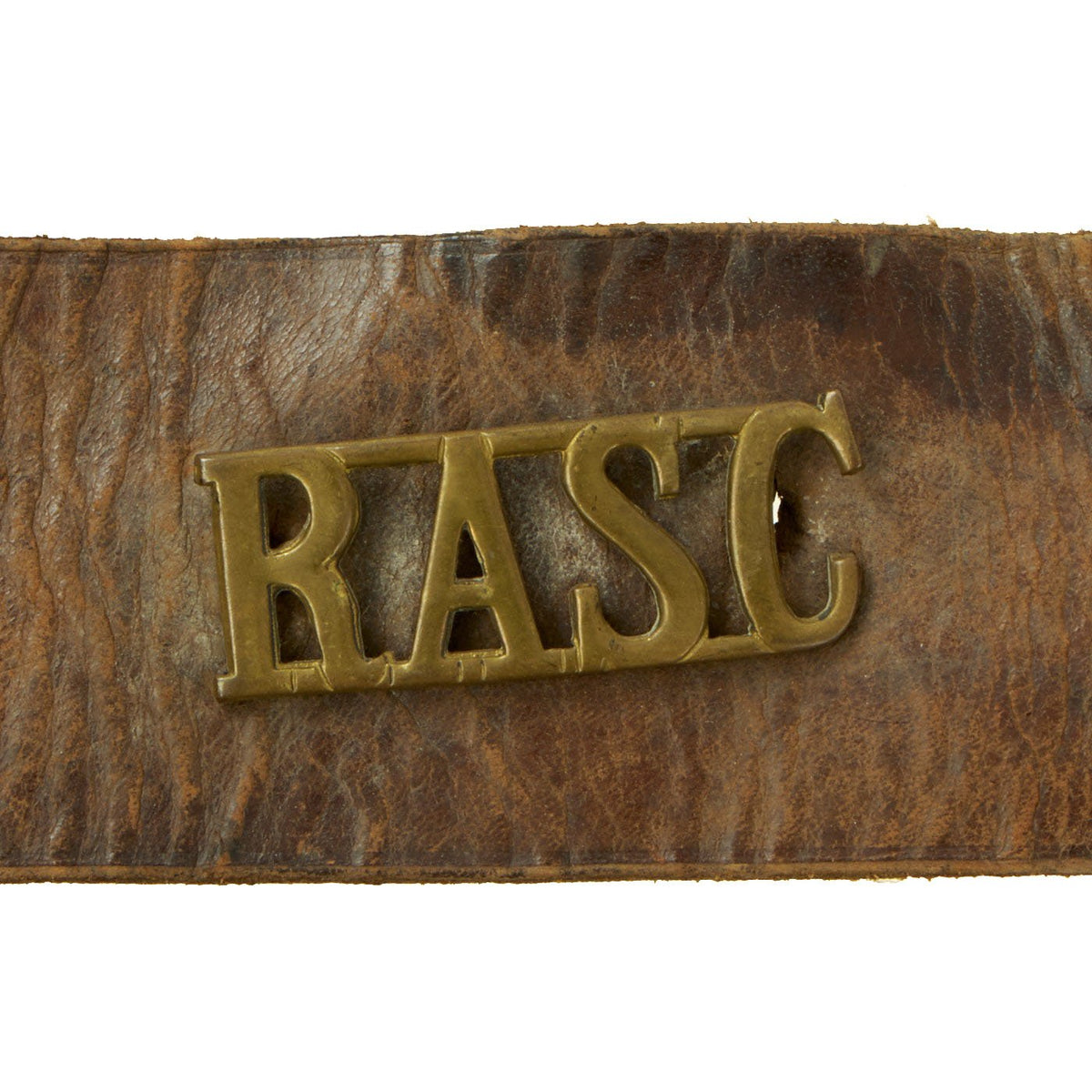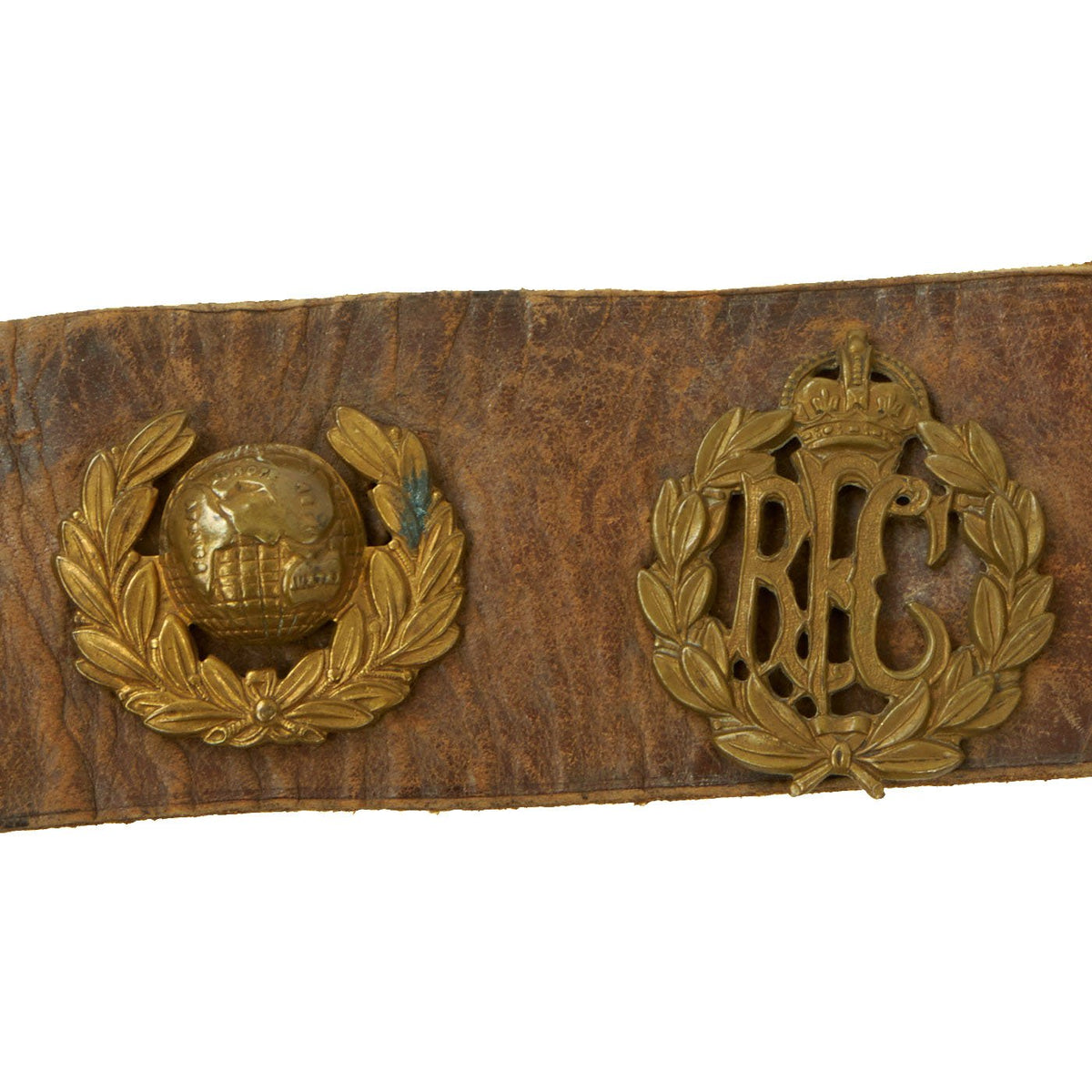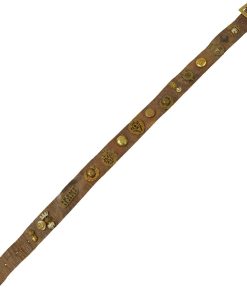Original British WWI Souvenir Leather Belt with 16 Attached Buttons, Badges & Insignia Original Items
$ 350,00 $ 105,00
Original Item: One-of-a-kind. American soldiers were known for their love of souvenirs in the Great War; So, a lot of material history of the war came across the Atlantic with returning soldiers. Among collectors of military memorabilia from World War One “SOUVENIR BELTS” are items of interest.
German soldiers’ leather belts, and other belts from participating armies, that were festooned with buttons from soldiers uniforms are called Hate Belts / Souvenir Belts / Grave Digger Belts. These made for excellent collector’s pieces.
“Hate Belt”: the idea was that if a German soldier had killed or captured an Allied soldier, then he would have the button from the newly deceased or captured soldier attached to his belt as a kind of notch of conquest on his belt. This, no doubt, is the most intriguing explanation for those decorative belts.
“Souvenir Belt”: this description is apt for many of the belts that are in circulation today. The souvenir belt would involve a German infantryman’s belt being decorated with buttons and tabs from troops BOTH Allied and CENTRAL Powers and kept as a remembrance of The War.
“Grave Digger Belt” description is self explanatory, to a degree. Troops burying dead soldiers would sometimes remove buttons from those they buried as a remembrance. It is impossible to determine the origin of most belts, but some of these highly collectible belts provide some hints as to their origin. Nevertheless, these belts provide for excellent points of interest for collectors.
This example offered in very good condition features a brown leather belt with a rectangular brass buckle, most likely British private purchase. It features an impressive 16 items in total attached to it, secured by a mixture of split pins, safety pins, and leather stripping. A few are installed via their own attachment tabs. Most look to be British forces regimental badges from various units, with some other insignia. Units represented include the Royal Flying Corps, the New Zealand IX Regiment, the Royal Artillery, and more. The belt measures about 36 inches long and 1 3/4 inches wide, with a brass buckle on the end.
An extremely impressive item! Ready to research and display!
Fast Shipping with Professional Packaging
Thanks to our longstanding association with UPS FedEx DHL, and other major international carriers, we are able to provide a range of shipping options. Our warehouse staff is expertly trained and will wrap your products according to our exact and precise specifications. Prior to shipping, your goods will be thoroughly examined and securely secured. We ship to thousands clients each day across multiple countries. This shows how we're dedicated to be the largest retailer on the internet. Warehouses and distribution centres can be located throughout Europe as well as the USA.
Note: Orders with more than one item will be assigned a processing date depending on the item.
Before shipping before shipping, we'll conduct a thorough inspection of the items you have ordered. Today, the majority of orders will be delivered within 48 hours. The delivery time will be between 3-7 days.
Returns
The stock is dynamic and we cannot completely manage it because multiple stakeholders are involved, including our factory and warehouse. So the actual stock may alter at any time. It's possible that you may not receive your order once the order has been made.
Our policy is valid for a period of 30 days. If you don't receive the product within 30 days, we are not able to issue a refund or an exchange.
You can only return an item if it is unused and in the same state as the day you received it. You must have the item in its original packaging.
Related products
Uncategorized
Uncategorized
Uncategorized
Uncategorized
Uncategorized
Band of Brothers ORIGINAL GERMAN WWII Le. F.H. 18 10.5cm ARTILLERY PIECE Original Items
Uncategorized
Uncategorized
Uncategorized
Uncategorized
Australian WWII Owen MK1 Machine Carbine SMG Custom Fabricated Replica with Sling Original Items
Uncategorized
Uncategorized
Uncategorized
Uncategorized
Uncategorized
Uncategorized
Uncategorized
